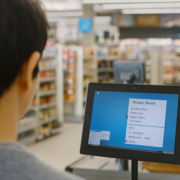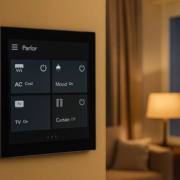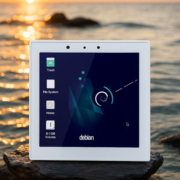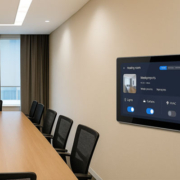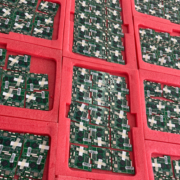Customize Portworld Android Smart Panels to Work with Linux-Based Backends
In the evolving landscape of smart home and commercial automation, flexibility and backend compatibility are becoming critical requirements. As more developers and integrators turn to Linux-based systems like Ubuntu and Debian for their reliability, performance, and open-source flexibility, the need for compatible front-end control solutions becomes clear.
This is where Portworld’s Android-based smart panels stand out. With powerful hardware, a customizable Android OS, and open communication protocols, Portworld smart home control panels can be seamlessly customized to work with Linux-based backends, making them the perfect bridge between user interface and system logic.
Why Choose Portworld Smart Panels?
Portworld specializes in 4-inch and 5-inch Android touchscreen control panels, engineered for smart homes, smart buildings, and commercial automation environments. These panels are compact yet powerful, offering:
- Capacitive Touch Displays with elegant UI possibilities
- Android OS for flexible application deployment
- PoE (Power over Ethernet) for streamlined installation
- Support for MQTT, HTTP, WebSocket, TCP/IP protocols
- Custom firmware options for integrators and developers
These features make Portworld panels ideal for custom integration with Linux-based servers or automation platforms like Home Assistant, openHAB, Domoticz, Node-RED, or even custom Python/Java backends.
How to Integrate Portworld Smart home Panels with Linux-Based Backends
1. Use Standard Communication Protocols
Portworld panels can communicate with Linux-based backends using open protocols like:
- MQTT – Ideal for lightweight IoT communication
- RESTful HTTP APIs – For pulling or pushing real-time data
- WebSocket – For interactive UIs with real-time updates
- Socket/TCP Connections – For low-latency custom protocol communication
This makes it easy to integrate the panel with popular automation platforms running on Linux.
2. Deploy Custom Android Apps
With full access to the Android OS, you can:
- Install your own APKs
- Use custom launchers or UI dashboards (e.g., WallPanel, Fully Kiosk)
- Display browser-based interfaces served from the Linux backend
- Connect via WebSocket or REST to your backend server for device control
3. Connect to Home Assistant, openHAB, or Custom Linux Servers
Portworld panels can:
- Display dashboards from Home Assistant running on Debian or Ubuntu
- Send control commands via MQTT to Linux IoT brokers
- Receive real-time sensor updates and display them on the screen
- Act as dedicated wall-mounted terminals for system monitoring and control
Real-World Use Case
Scenario: A hotel installs Portworld 5-inch smart panels in every room. A centralized Linux server (running Ubuntu) handles guest room automation, energy tracking, and room service notifications.
Solution: Portworld Android Smart home control panels are customized to:
- Display room status and service options via a web-based UI served from the Linux backend
- Communicate with the backend via REST and MQTT
- Send real-time data to the server for room temperature, occupancy, and guest interactions
- Receive notifications from the Linux backend for scheduled housekeeping or emergency alerts
Result: A seamless, stable, and scalable smart control system built on Linux + Android.
Why Linux-Based Backends + Android Panels Are the Ideal Pair
| Feature | Linux Backend | Portworld Android Panel |
|---|---|---|
| Open-source | ✅ | ✅ |
| Scalable | ✅ | ✅ |
| Cost-effective | ✅ | ✅ |
| Secure | ✅ | ✅ |
| Customizable | ✅ | ✅ |
| Long-term Support | ✅ | ✅ |
This combination empowers system integrators to build powerful, modern, and open smart control ecosystems.
Portworld’s Value-Added Services
Portworld doesn’t just provide the panels—we offer:
- Custom OS Build Support (APKs, root-level changes, Kiosk mode)
- PCBA Customization & OEM Branding
- CKD/SKD Supply Chain Solutions for tariff optimization
- Engineering Support for Linux-side integration and testing
- Fast Global Delivery & Commercial Partnerships

